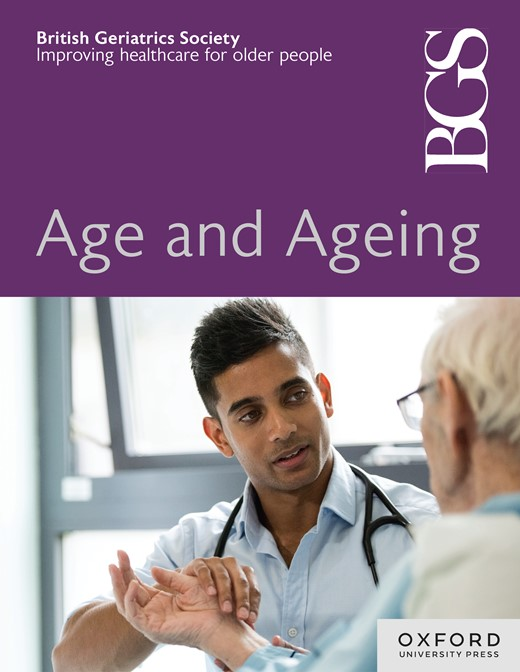2999 An audit of the impact of bone health assessment in residential home patients
IF 7.1
2区 医学
Q1 GERIATRICS & GERONTOLOGY
引用次数: 0
Abstract
Introduction There are approximately 549,000 new fragility fractures each year in the UK and the prevalence of both osteoporosis and risk of falling increases with age. Care home residents are three times more likely to fall and have a 3- to 4-fold higher incidence of fractures than people of the same age living in the community. These older, frailer and multimorbid patients often have the highest fracture risk and therefore the most to gain from anti-osteoporosis treatments to reduce this risk. Method Retrospective audit of residents who were reviewed by the newly started Enhanced Health in Care Homes (EHCH) team within the 5 residential homes for an initial comprehensive geriatric assessment (CGA) between March 2022–June 2024. These initial CGAs were reviewed to determine if a FRAX assessment had been completed and subsequent sub-analysis of those with high/very high FRAX scores to determine whether they were on appropriate bone protection. Results 100% of residents (183) had a bone health assessment including a FRAX score (age-adjusted if appropriate). Prior to CGA, 37% patients with a high/very high FRAX score were on appropriate bone protection, having excluded patients who were not suitable for any treatment for reasons including poor renal function or not clinically appropriate. Following EHCH initial CGA and management plan, this average improved to 85% across the residential homes. The most significant improvement in one residential home was from 0% to 83% post bone health assessment. Conclusion There has been a considerable improvement from 37% to 85% in the number of residents at high and very high risk of fractures who are on appropriate bone health protection following an initial bone health assessment and subsequent management plan initiated by the Enhanced Health in Care Home team.2999 .对住院病人骨骼健康评估影响的审计
在英国,每年大约有549,000例新的脆性骨折,骨质疏松症的患病率和跌倒的风险随着年龄的增长而增加。养老院的居民摔倒的可能性是社区同龄居民的三倍,骨折的发生率是社区同龄居民的三到四倍。这些老年人、体弱多病的患者往往有最高的骨折风险,因此从抗骨质疏松治疗中获益最多,以降低这种风险。方法回顾性审计在2022年3月至2024年6月期间,由新成立的“增强健康护理院”(EHCH)小组对5家安老院舍内的居民进行初步综合老年病学评估(CGA)。对这些初始CGAs进行审查,以确定是否完成了FRAX评估,随后对FRAX得分高/非常高的患者进行亚分析,以确定他们是否接受了适当的骨骼保护。结果100%的居民(183名)进行了骨骼健康评估,包括FRAX评分(如果合适,可以调整年龄)。在CGA之前,37% FRAX评分高/非常高的患者接受了适当的骨保护,排除了因肾功能不佳或临床不合适等原因不适合任何治疗的患者。根据EHCH最初的CGA和管理计划,这一平均水平在住宅中提高到85%。在一个住宅家庭中,骨骼健康评估后最显著的改善是从0%到83%。结论:在最初的骨骼健康评估和由增强健康护理团队发起的后续管理计划之后,接受适当骨骼健康保护的高和超高骨折风险居民的数量从37%显著改善到85%。
本文章由计算机程序翻译,如有差异,请以英文原文为准。
求助全文
约1分钟内获得全文
求助全文
来源期刊

Age and ageing
医学-老年医学
CiteScore
9.20
自引率
6.00%
发文量
796
审稿时长
4-8 weeks
期刊介绍:
Age and Ageing is an international journal publishing refereed original articles and commissioned reviews on geriatric medicine and gerontology. Its range includes research on ageing and clinical, epidemiological, and psychological aspects of later life.
 求助内容:
求助内容: 应助结果提醒方式:
应助结果提醒方式:


